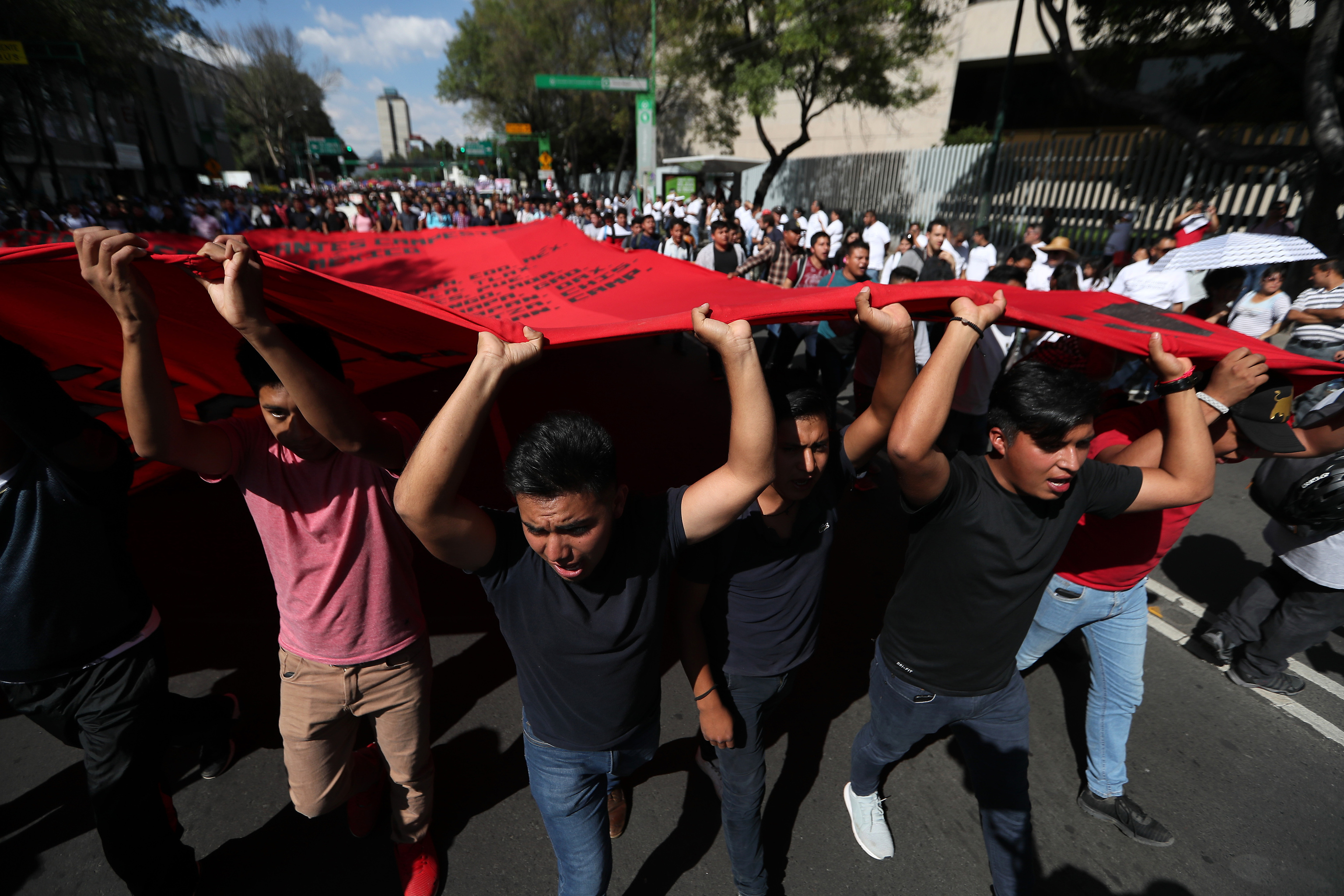More evidence has emerged that Mexican authorities disposed of the bodies of dissidents in "death flights" during the country's 1965-1990 "dirty war. "
Mexico's governmental Truth Commission said in a report Friday that recollections by witnesses and documents leaked over the years described the chilling last moments of the victims. The executions were part of an effort by the Mexican government at the time to eliminate leftist social and guerrilla movements.
The victims, who have not been identified or counted, were pulled one by one to a bench at a military airfield near Acapulco. They believed they were going to have their photographs taken, but were instead shot in the back of the head, and their bodies dumped by plane out in the Pacific ocean.
According to testimony by Gustavo Tarín, who served in a military police unit at the time, the same pistol was used so often in the killings that soldiers came up with a nickname for it: "the sword of justice."
Tarín said that as many as 1,500 people may have been killed that way, though he provided no lists nor names of the victims. Some of the victims may have been dying, but not yet dead, when they were pushed out of the planes.
Military aviation mechanic Margarito Monroy said he participated in 15 of the flights, and that female victims were sometimes offered release, or the release of their husbands, if they had sex with soldiers, though he never saw any of them released.
The truth commission located log books for about 30 flights by one plane from the base between 1975 and 1979. And in a two-decade-old witness statement from a man who claimed to be an armed forces deserter, another 25 flights by another plane are mentioned.
That statement, which had long been held in the archives of a now-deceased rights activist, included a list of 183 names of likely victims on the "death flights." Several of those names match people who disappeared during the government counter-insurgency campaign.
Unlike the better-known case of the "death flights" carried out by Argentina's 1976-1983 military dictatorship, little is known about the ones carried out by Mexico, mainly in the 1970s, from a small airbase at Pie de la Cuesta, just west of Acapulco.
During a 2012-2017 trial, survivors in Argentina testified that the flights took place at least weekly.
The Argentine trial, at which 29 former officials were sentenced to life in prison, proved that the Argentine dictatorship used "death flights" as a systematic mode of extermination. Argentina's junta is widely considered the most deadly of the military dictatorships that ruled much of Latin America in the 1970s and 1980s. Human rights groups estimate 30,000 were killed, many of whom disappeared without a trace.
In Mexico, the less-widespread executions appeared to target small rural guerrilla movements in Guerrero state, where Acapulco is located. But a broad range of people were apparently swept up in the killings.
The Mexican executions appeared a bit more rudimentary and less well-planned: fishermen in the area recalled seeing bodies wash up on shore, after which the military allegedly began placing them in sacks weighted down with rocks before tossing them into the ocean.
The revelations were part of a 4,000-page report detailing everything from executions, torture, disappearances and forced displacement carried out by the government against farmers, students, union activists and members of Indigenous groups. Almost none of the abuses have ever been brought to trial, despite investigations having started as far back as President Vicente Fox's administration (2000-2006).
The victims of the "death flights" were just one small part of a bigger strategy of repression. Overall, the truth commission cited evidence that nationwide there were about 4,500 identified victims of severe abuses during the so-called "dirty war." It documented 1,450 were killed and another 517 simply disappeared without a trace.
The government has carried out excavations in and around military bases in recent years trying to relocate the remains of those buried in clandestine grave sites, with relatively little success. During the commission's work, the remains of seven victims were recovered.
But the report's authors also noted that the Army, National Intelligence Center and other institutions denied requests for some documents and had destroyed others in an attempt to "hide the truth."
The commission asked that some 600 possible perpetrators of the abuses be investigated for their involvement, though many of them may have died.
In 2004, now-deceased former president Luis Echeverría became the first former Mexican head of state formally accused of criminal wrongdoing. Prosecutors linked Echeverría, who governed from 1970 to 1976, to the "dirty war" in which hundreds of left-wing activists and members of fringe guerrilla groups were imprisoned, killed, or simply disappeared without a trace.
In 2005, a judge ruled Echeverria could not be tried on genocide charges stemming from political killings in 1971, saying that while the former president may have been responsible for homicide, the statute of limitations for that crime expired in 1985. In March 2009, a federal court upheld a lower court's ruling.
